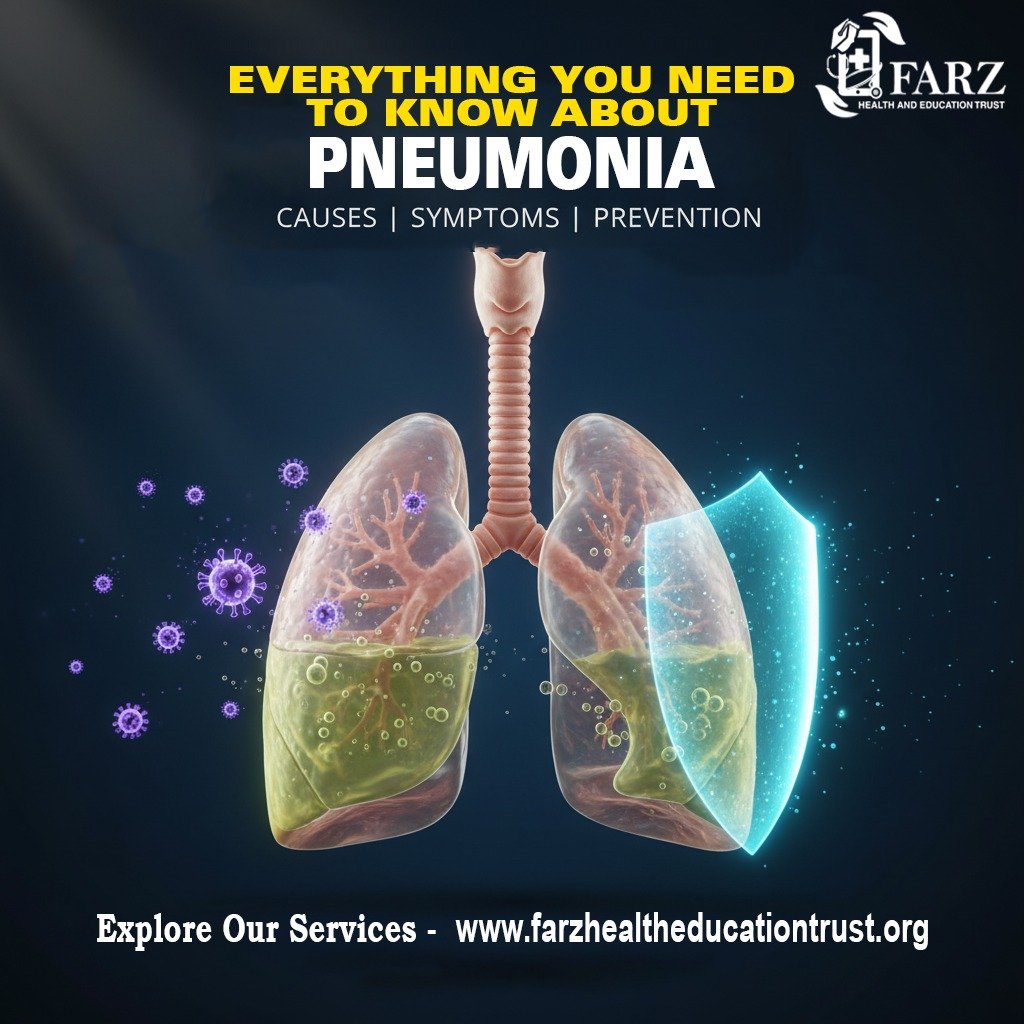
Introduction
Pneumonia remains one of the world’s most common yet dangerous respiratory infections. It affects people of all ages and continues to claim more than 2.5 million lives annually. Understanding the causes of pneumonia, along with its symptoms and prevention strategies, can help you act early and avoid serious complications.
As per the World Health Organization (WHO), pneumonia is the single largest infectious cause of death among children worldwide — yet most cases are preventable through vaccination and timely care.
Understanding Pneumonia
Pneumonia occurs when an infection inflames the tiny air sacs (alveoli) in the lungs, causing them to fill with fluid or pus. This buildup blocks normal oxygen exchange, making it hard to breathe and weakening the body over time.
The causes of pneumonia can vary widely — from bacteria and viruses to fungi and even inhaled substances. Each cause affects the lungs differently and requires a specific treatment approach.
Common Symptoms of Pneumonia
Recognizing symptoms early can save lives. Whether mild or severe, these are warning signs that demand medical attention:
• Persistent cough (dry or with mucus)
• Fever, chills, and excessive sweating
• Rapid or shallow breathing
• Chest pain during breathing or coughing
• Loss of appetite and constant fatigue
• Confusion in older adults
If you notice these signs, it’s crucial to identify the causes of pneumonia through medical diagnosis before starting any treatment.
Major Causes of Pneumonia
The causes of pneumonia differ by the source of infection and the individual’s overall health. Understanding them helps in proper prevention and treatment.
1. Bacterial Pneumonia
The most common bacterial cause is Streptococcus pneumoniae. It often develops after a cold or flu, when the body’s defenses are low.
Other bacteria like Haemophilus influenzae and Staphylococcus aureus can also cause pneumonia, especially in people with chronic illnesses.
2. Viral Pneumonia
Viruses are among the leading causes of pneumonia, including influenza (flu virus), respiratory syncytial virus (RSV), and COVID-19. Viral pneumonia is usually milder but can become severe in infants, elderly adults, or those with compromised immunity.
3. Fungal Pneumonia
Fungi such as Histoplasma, Cryptococcus, and Pneumocystis jirovecii can trigger pneumonia, particularly in people with weakened immune systems, such as transplant patients or those with HIV/AIDS.
4. Aspiration Pneumonia
This occurs when food, drink, or vomit accidentally enters the lungs, leading to inflammation and infection. It is one of the lesser-known causes of pneumonia and is common among individuals with swallowing difficulties or neurological conditions.
5. Hospital-Associated Pneumonia
Hospital-acquired infections are serious causes of pneumonia, often linked to ventilators or prolonged hospital stays. These infections are harder to treat because they’re resistant to common antibiotics.
For detailed medical insights, refer to Mayo Clinic’s Pneumonia Overview.
Types of Pneumonia
Pneumonia can develop in different environments, leading to variations in symptoms and severity:
• Community-acquired pneumonia (CAP): Caught outside hospitals, often bacterial or viral.
• Hospital-acquired pneumonia (HAP): Develops during hospitalization.
• Aspiration pneumonia: Caused by inhaled materials.
• Ventilator-associated pneumonia (VAP): Linked to mechanical ventilation.
Each type has its own causes of pneumonia, but all share one thing in common — prompt diagnosis is key to recovery.
Diagnosis and Treatment
Doctors use chest X-rays, blood tests, and sputum analysis to identify the causes of pneumonia accurately.
Treatment depends on the source of infection:
• Bacterial pneumonia: Antibiotics are prescribed.
• Viral pneumonia: Managed with antiviral medication and rest.
• Fungal pneumonia: Treated using antifungal drugs.
In severe cases, hospitalization may be needed for oxygen therapy or intravenous antibiotics.
Prevention Strategies
Understanding the causes of pneumonia is half the battle. Preventing infection is the other half.
Follow these prevention tips:
• Vaccination: Get pneumococcal and annual flu vaccines. CDC Vaccine Guide
• Quit smoking: Smoking weakens your lungs’ natural defenses.
• Healthy living: Eat nutritious food, stay active, and get enough sleep.
• Avoid sick contacts: Stay clear of people showing flu-like symptoms.
• Good hygiene: Wash hands frequently, especially during flu season.
• Protect your immune system: Manage chronic illnesses and reduce stress.
By following these steps and knowing the causes of pneumonia, you greatly reduce your risk of severe infection.
Final Thoughts
Pneumonia spreads silently but strikes hard. Being informed about the causes of pneumonia and acting early can save lives. Stay vaccinated, maintain healthy habits, and seek medical help at the first sign of trouble.
Protect your lungs today — because prevention always starts with awareness.
